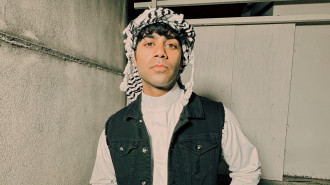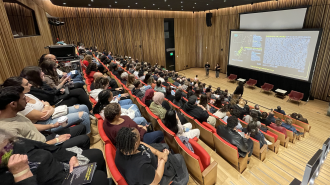
To make a house a home: One year after Taliban takeover, Afghan bricklayers rebuild country brick by brick

Every evening as the sun sets over Kabul, Habibullah coughs an entire day’s worth of dirt out of his lungs.
His arms are weak, tired from 12 hours of shovelling mounds of dirt. But he has to use them to pump water from a muddy well, which he uses to flush his nose and wash his eyes.
At the end of each day, he is covered in dirt. It finds its way into his hair, despite the black cotton scarf he wraps around it. It covers his hands and feet.
He will have to scrub and scrub to try to rid his body of the smell of smoke and dust. With at least two other people waiting for their turns, he will have to wash as quickly but as thoroughly as possible to try and get the dirt and dust off his sun-damaged skin.
"Since the Taliban’s return to power last August, Afghanistan as a whole has been struggling under the weight of international sanctions, falling currency values and aid cutbacks"
He has been working in Kabul’s brick-making industry since he was a teenager, but he has never experienced a year this bad.
“I work from the dawn prayer until the evening, shovelling dirt for hours on end, and it amounts to nothing,” the 30-year-old says standing near a wheelbarrow that he will eventually throw more and more dirt into.
He arrived in Kabul from his native Jowzjan province, 566 kilometres to the north, just over a month ago, but he says he’s made no money to send back to the 14 other men, women and children who are dependent on him.
Like millions of Afghans, Habibullah knows that the overall economic situation of the country will make it nearly impossible for him to make enough to fully support his family, but he has to at least try.
Since the Taliban’s return to power last August, Afghanistan as a whole has been struggling under the weight of international sanctions, falling currency values and aid cutbacks. These economic setbacks also mean fewer people are interested in construction projects, which are essential to the brickmakers’ own incomes.
“Who can afford to build anything these days, when people don’t even have enough money for food,” he says as the heat from the 30-degree Kabul sun and the smoke billowing from the giant coal chimneys bare down on him.
According to the Ministry of Finance, 7,000 of 12,000 planned construction projects in the country remained at a standstill at the end of last year. Habibullah and the other brick makers say these halted construction projects have had a huge impact on their earnings.
In years past, they would load 3,000 bricks at a time onto six to eight trucks per day. This year, they say they are lucky to have three trucks come each day.
In prior years, Habibullah could have brought his teenage brothers with him, and they could have earned up to 50,000 Afghanis ($506) a month between them. However, this year there wasn’t enough work to justify the 3,000 Afghani ($33) cost of the journey from Jowzjan to Kabul.
The brickmakers’ woes are indicative of the larger economic problems facing the country a year after the Taliban regained control of the nation.
Though the Taliban have been accused of human rights violations, retaliatory killings of former security forces and stifling of free speech, for millions of Afghans, the biggest impact of their return to power has been economic.
The already struggling Afghan economy was dealt a further blow when the Taliban walked back into Kabul. Washington, Brussels and organizations like the United Nations and World Bank could not approve of a caretaker government where several men on international wanted lists and with bounties on their heads were in key positions of power.
"Last December, the United Nations estimated that it would take $2 billion in assistance just to lift the incomes of people in extreme poverty back to the poverty line"
Suddenly, a nation that relied on foreign aid for 75 percent of its public expenditures was essentially cut out of the global financial system just as international assistance was being greatly reduced.
Last December, the United Nations estimated that it would take $2 billion in assistance just to lift the incomes of people in extreme poverty back to the poverty line after the recent economic declines.
The UN went on to report that by the end of 2022, 97 percent of the nation’s 38 million people could fall below the poverty line by the middle of 2022.
Habibullah makes between 200 and 600 Afghanis, about $3 and $7 a day, which technically puts him above the poverty line. However, when he accounts for his daily food expenditures he’s lucky if he clears the $1.91 needed to keep him at the poverty line.
In years past, Habibullah could have made up for any lost income with his family’s wheat crops back home in Jowzjan. But over the last year, the country has been driven further into drought.
As of May 20, the Northern and Central provinces of the country experienced 75 percent lower than average cumulative precipitation.
The droughts forced Habibullah to leave Jowzjan and return to Kabul for brickwork, but this year he has had to work just as hard for much less money.
Standing in front of him, it’s clear the 12 hours a day Habibullah spends out in the open air shovelling dirt and lifting bricks onto trucks has taken a toll on him.
Like most of the workers here, the skin on his face and hands, the two parts exposed to the sun and heat, seem inordinately darker, as if they too have been baked by the dust and heat. His grey traditional piran tomban is covered in streaks of light brown and his feet, covered only by plastic sandals, are caked in several layers of dirt.
|
“I can’t wear shoes here, it hurts my feet too much,” he says.
His physical state is a reflection of his surroundings, mounds of dirt and dust dotted with chimneys billowing thick, dark black smoke as far as the eye can see.
There is no greenery in site. All around him are shades of brown, white and faded grey.
Even the road leading to the brick-making areas is unpaved and full of rocks and pebbles that jut out from atop the layers of dirt.
Habibullah knows the work he’s done here for 15 years has taken a toll on him physically, but he has to do something to feed his family back home.
This year, rising costs means putting food on the table is especially difficult. The higher prices come from a combination of reduced currency values, high unemployment and export restrictions on things like wheat and sunflower oil as a result of the conflict in Ukraine, which has taken much of the global attention away from Afghanistan.
Zabiullah, another brick maker, says that the price of a kilo of rice has doubled, even tripled to 140 Afghanis in recent weeks. The price of cooking oil has also skyrocketed. In the past, 10 kilos cost about 1,050 Afghanis ($11.70), now that has climbed to 1,800 ($20).
"The pressure on Habibullah is great. His father suffered an injury from a landmine during the rule of the nation’s last Communist President, Najibullah Ahmadzai, in the 1990s. His youngest brother is studying in a madrasa and his teenage brothers are among the one million who have become unemployed over the last year"
These numbers are more than statistics to Habibullah and his friends, though. What little money they have been making from brick trucks each day has gone to their own personal food costs, meaning they have yet to make enough to send even a dollar back home.
It also means they can’t afford the 1,000 Afghani ($11.20) ride back to their home provinces. This has left the brick makers to consider spending 100,000 Afghanis ($1,112) to try and reach Turkey.
Over the last year, business owners in Kabul and other provinces say much of their skilled labour forces have left for neighbouring states and Turkey.
However, this comes at a time when Iran, Turkey and Pakistan continue to deport Afghan refugees back to the Taliban’s Islamic Emirate, as they call their government, even though no nation has acknowledged them as the legitimate government of Afghanistan.
Turkey has been deporting hundreds of Afghan refugees each week since the start of the year. Iran and Pakistan never ceased their deportations, even as the Taliban were overtaking districts and provinces last summer.
Tehran says that in 2021, between 500,000 and one million Afghans entered Iran. However, the United Nations High Commissioner for Refugees reported that 65 percent of Afghans had been deported back to Afghanistan last year.
Other undocumented Afghans have not even had the chance to enter Iranian soil. In February, local officials in Afghanistan’s Southwestern province of Nimroz reported that at least 100 Afghans were shot by Iranian border guards when trying to cross over.
In Pakistan, the situation is not much better. In June, local authorities in the Northern Afghan province of Baghlan reported that hundreds of families had been deported by Islamabad.
|
These stories of deportation are especially personal for Habibullah. Two of his brothers entered through the help of smugglers this year. However, over the last three months, both have come face-to-face with Turkish authorities in Konya province, where they worked as shepherds.
One brother had just paid off the $600 debt to smugglers when he was picked up by Turkish Police. The other was detained in late June and has not been heard from in more than 40 days.
“At first, I thought I didn’t have to worry this year because they would send money back home, but now I can’t even rely on that,” Habibullah said as a dust storm started to blow in the distance.
The pressure on Habibullah is great. His father suffered an injury from a landmine during the rule of the nation’s last Communist President, Najibullah Ahmadzai, in the 1990s. His youngest brother is studying in a madrasa and his teenage brothers are among the one million who have become unemployed over the last year.
Habibullah says he will give the brick-making another month, but if he doesn’t start to make money soon, he will have no choice but to try and head to Turkey just as the Taliban’s Islamic Emirate passes its one-year anniversary.
“I wouldn’t do this for even one day if I didn’t have to,” he says, but Habibullah also knows that the chances are high that he will have to spend much of the Taliban’s second year in power trying to enter and stay in Turkey.
“Everyone who had money already the country, now it’s only the poor left behind,” he says of the 38 million Afghans left in the country since the Taliban returned to power.
Ali M Latifi is a Kabul-based freelance journalist. He has reported from Afghanistan, Qatar, Turkey, Greece and Washington, DC.
Follow him on Twitter: @alibomaye
![Habibullah pictured here at a construction site as a sandstorm brews [photo credit: Ali M. Latifi]](/sites/default/files/2022-08/Habibullah_0.jpg)
![Afghan children scavenge scrap metals in Kabul [Getty Images]](/sites/default/files/styles/medium_16_9/public/2022-08/GettyImages-1242124169.jpg?h=199d8c1f&itok=aDxuCl4K)
![The site at which Habibullah, and other Afghan bricklayers, attempt to salvage an income [photo credit: Ali M. Latifi]](/sites/default/files/styles/medium_16_9/public/2022-08/Afghan%20bricklayers.jpg?h=466fb4b1&itok=CmBR4vJq)
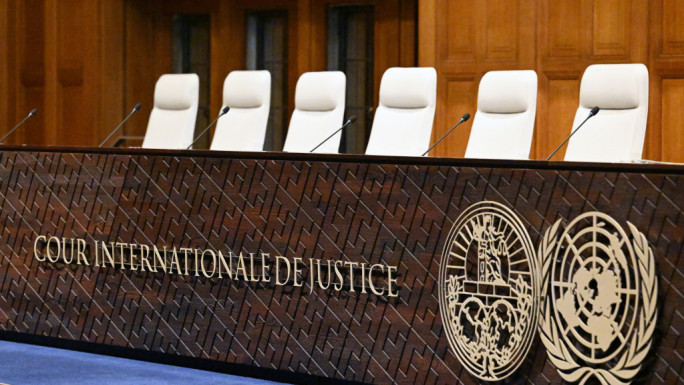
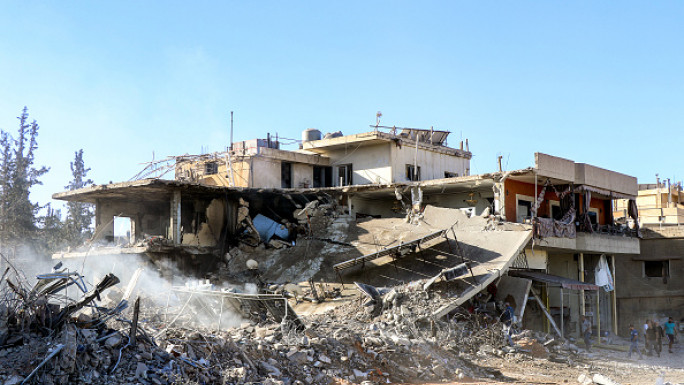
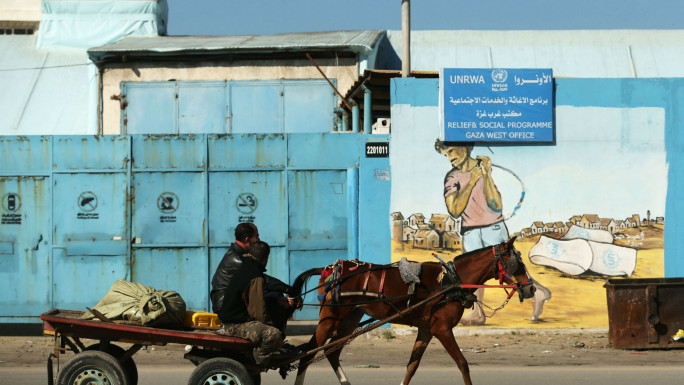

 Follow the Middle East's top stories in English at The New Arab on Google News
Follow the Middle East's top stories in English at The New Arab on Google News

